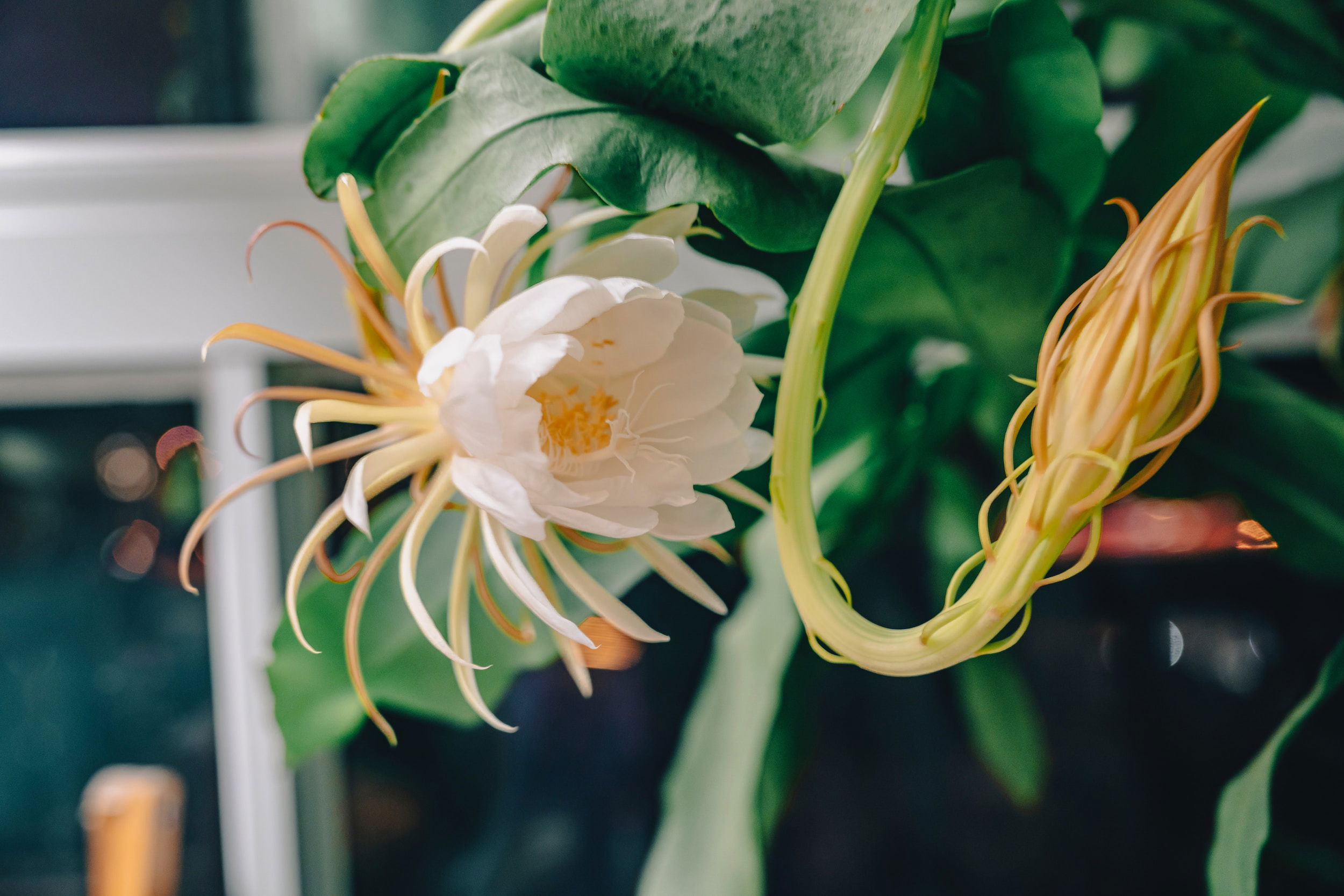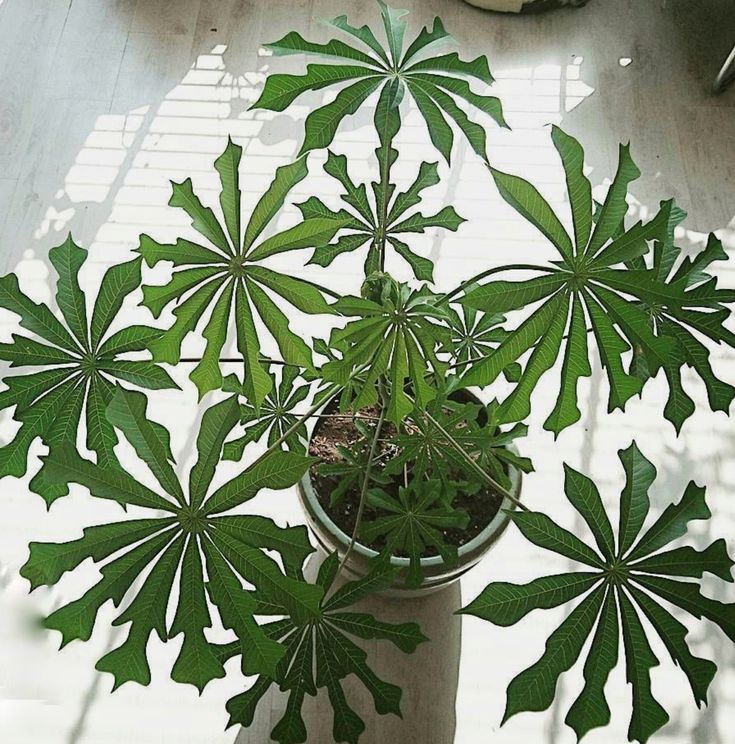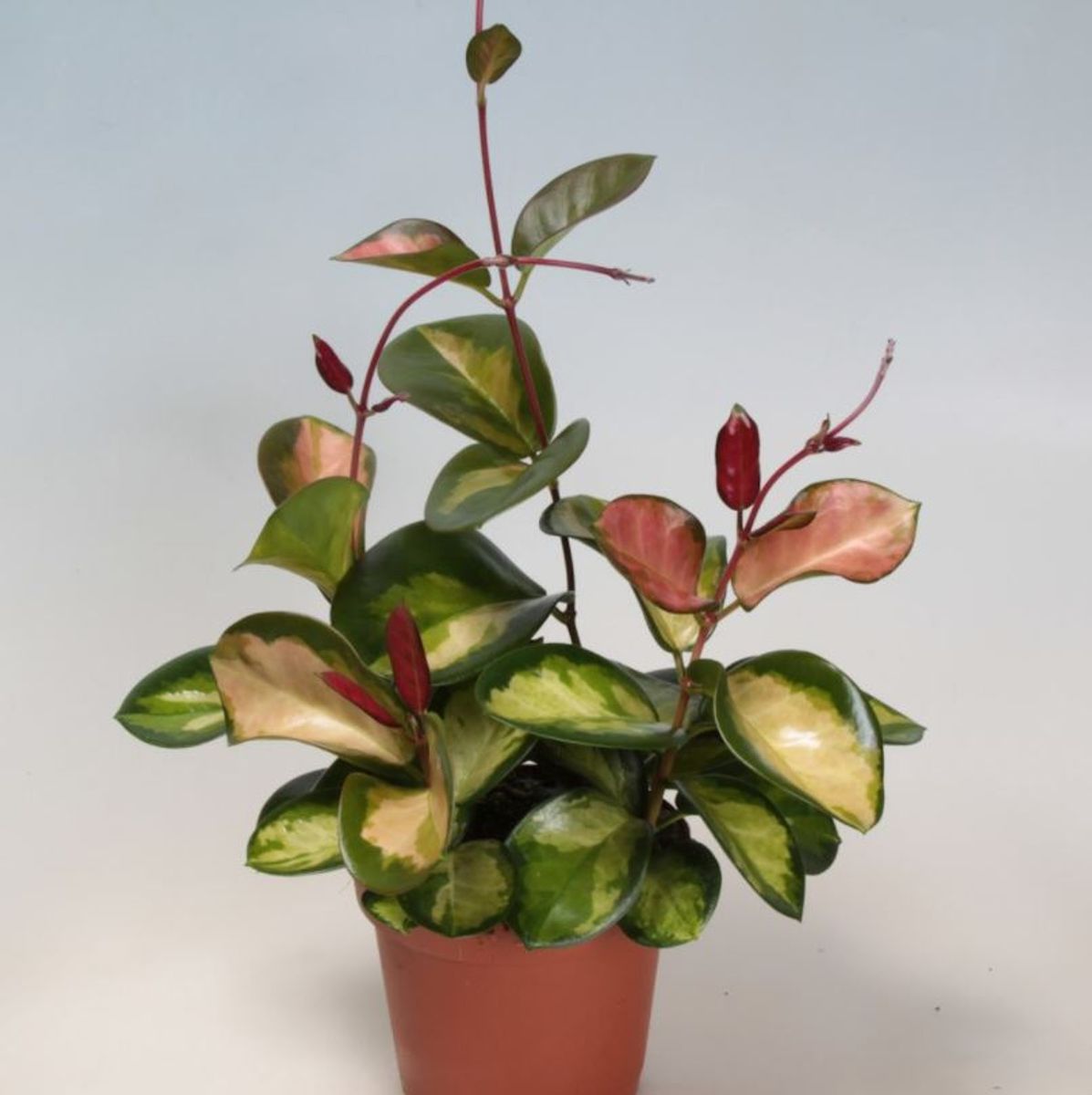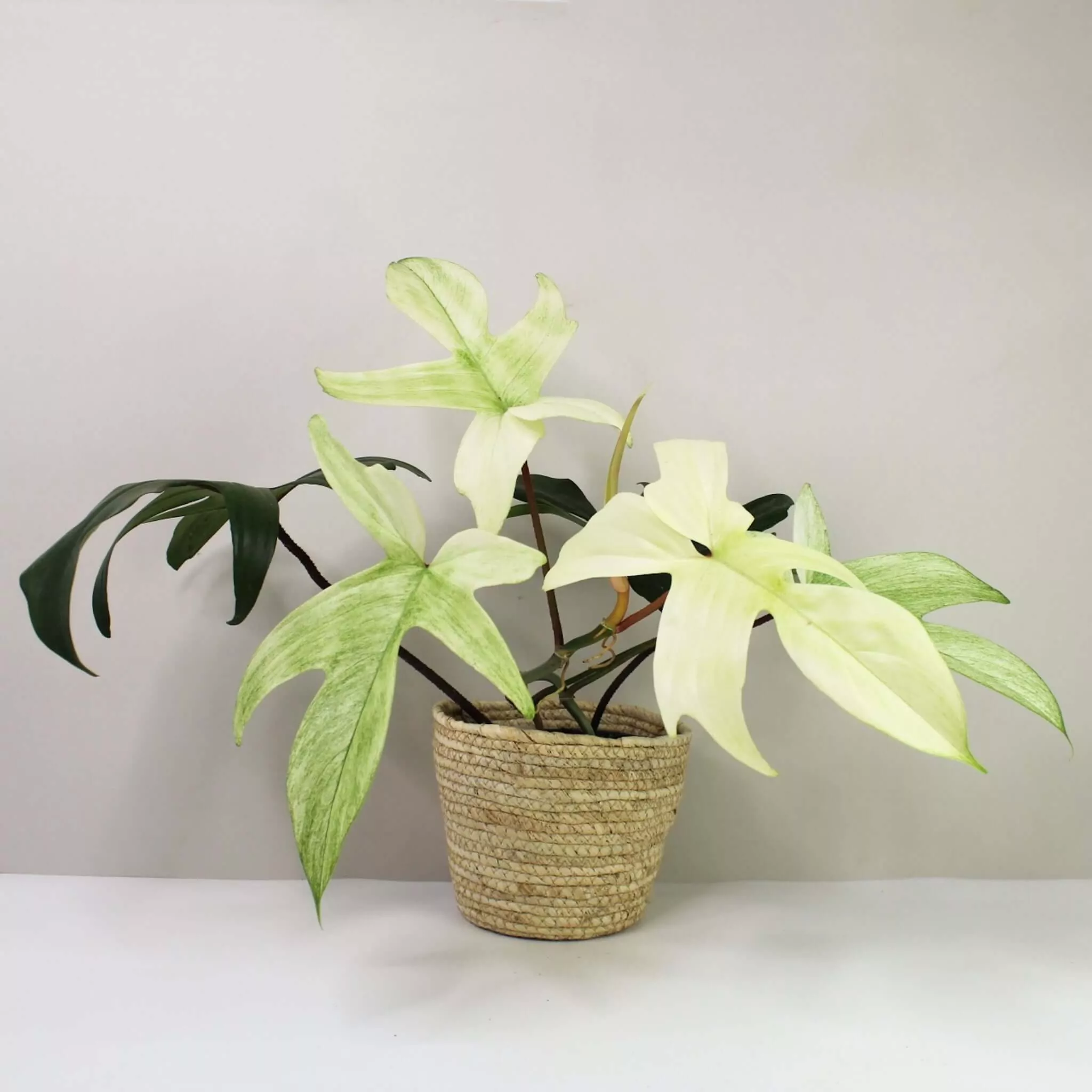This article was written by our friends Plant Studio in Bristol!
As any houseplant enthusiast will attest, our hobby is well-known for attracting avid collectors. In fact, many of us entered the hobby rather unwittingly, usually after receiving an innocent, well-meant gift from a friend or relative. Little did they know how quickly our obsessions would snowball from one lonely spider plant or solitary succulent, into a room full of specimens…
As collectors, it’s unsurprising that we’re drawn to the more extraordinary, elusive, and downright rare houseplants. The allure of unique foliage and the thrill of nurturing a plant few have seen creates a special appeal. To celebrate some of these rare specimens, we’ve collaborated with our friends at Plant Studio — an independently-run Bristol plant shop famed for stocking some of horticulture's most slippery specimens — to create a list of 5 joint favourites.
So, if you're on the lookout for distinctive specimens to impress (or induce envy among) your friends, keep your eyes peeled for these rare beauties!
‘Curly Locks’ Orchid Cactus - Epiphyllum guatamalense

We’re starting the list off strong, with the rather mesmerising Orchid Cactus! This rare succulent boasts uniquely curled locks, resembling delicate tendrils cascading from its vibrant green stems.
Native to Central America, this cactus is epiphytic, meaning that in its natural habitat, it grows on the surface of other plants and derives its moisture and nutrients from the air, rain, water, or from debris accumulating around it. Strange, huh? And if you like the idea of epiphytic cacti, it’s worth reading up on another one of our favourites, the Mistletoe Cacti.
Properly pampered, this cactus also produces stunning, large flowers that bloom spectacularly, making it a breathtaking addition to any plant collection!
Light: This one has no issue with the weak rays of the morning sun, but generally, it prefers bright, indirect light. An East-facing window is ideal.
Watering: Water when the soil is almost fully dry. Never allow it to sit in water.Temperature: 15° - 28℃ (59° - 82℉)
Potting: These plants love a chunky soil mix — we can handcraft one for you!
Top Tips: This beauty flowers! But be prepared to appreciate it if you do notice this spectacle — the blooms typically only last 24 hours and are only fully open at night!
Pet Friendly: YES
Ceropegia linearis 'Remy' - String of Spades

For those with a penchant for trailing wonders, the Ceropegia Linearis 'Remy,' commonly known as String of Spades, is a rare gem worth seeking. This succulent showcases slender, spade-shaped leaves that gracefully dangle, creating quite the display. Care for it properly, and it’ll reward you with beautiful tubular flowers, too.
Native to South Africa, the String of Spades adds a touch of elegance to any hanging planter or elevated shelf. If you’re lucky enough to track one down, grab it! Embrace the allure of this rare Ceropegia and let its distinctive foliage elevate your indoor foliage display.
Light: Similar to the Orchid Cactus, the String of Spades prefers bright, indirect light.
Watering: Soggy soil is a no-no! Always allow the soil to dry between watering. Bottom watering isn’t essential, but is ideal.
Temperature: 15° - 28℃ (59° - 82℉) is perfect, just keep it away from cool drafts!
Potting: Drainage is everything, so a good succulent mix is a great choice.
Top Tips: A hanging planter or elevated shelf will allow your String of Spades to delight onlookers with its pendulous vines.
Pet Friendly: YES
Manihot grahamii - Hardy Tapioca
Next on our list is a true botanical enigma — the Grahamii manihot. This rare houseplant has earned its mysterious moniker for a reason. Native to the rainforests of South America, the Grahamii manihot bears a striking resemblance to the far more commonplace (but still lovely) Schefflera, just a little more prehistoric-looking.
Despite its elusive nature, this species is a resilient one. It’s actually capable of thriving outdoors in the UK and can tolerate temperatures as low as -5°C (23℉), so it’ll have no problem surviving in even the chilliest of abodes. The only problem? It’s rarer than hen’s teeth. Good luck finding one (and please, let us know if you do!).
Light: While it can tolerate lower light conditions, this plant truly thrives in bright, indirect light. Keep it away from harsh midday sun, though, as it prefers a more dappled setting.
Watering: This one enjoys consistent moisture. Keep the soil evenly moist, but not waterlogged. A regular misting session will always be appreciated.
Temperature: Aim to maintain a warm and tropical environment, with temperatures ranging between 20° - 26°C (68° - 79℉). It might sulk a bit if exposed to cooler drafts, so keep it snug.
Potting: Opt for a well-draining mix that retains some moisture. A blend of coco coir, perlite, and orchid bark should do the trick.
Top Tips: Regularly wipe its leaves with a damp cloth to keep them free of dust and ensure maximum light absorption.
Pet Friendly: NO
Hoya australis 'Lisa' - Wax Plant
Moving along our list of rare wonders, we arrive at the Hoya australis 'Lisa' - Wax Plant. This particular Hoya variety is a splendid sight to behold with its thick, waxy leaves that cascade elegantly. The 'Lisa' is a particularly sought-after variegated form, showcasing a delightful mix of green and creamy-white tones. A pleasure to behold, and thankfully, while rare, still relatively easy to track down (at least in comparison to that pesky Manihot!).
Native to Australia, this Hoya demands attention with its sweet fragrance and the mesmerizing way it trails or climbs. Whether hanging from a macramé planter or displayed on a shelf, the Hoya australis 'Lisa' adds a touch of botanical charm to any space.
Light: Indirect light is the name of the game for this beauty. Shield it from intense afternoon sun to prevent leaf burn.
Watering: Allow the soil to dry out between waterings. Being a succulent, it's better to err on the side of under-watering than over-watering.
Temperature: Keep it cosy, maintaining temperatures between 15-26°C. It's not a fan of the cold, so protect it from drafts.
Potting: Opt for a well-draining mix to keep those roots happy. A mix designed for orchids or succulents will work wonders.
Top Tips: Hoya australis 'Lisa' is a slow grower, but patience pays off. Regularly prune to encourage bushier growth and more blooms.
Pet Friendly: YES
Philodendron ‘Florida Ghost’
Halloween may have been and gone, but the Philodendron ‘Florida Ghost’ will keep the spooks coming all year round! A captivating cultivar that stands out with its ghostly foliage which emerges a spectral white, only to slowly fade into a silvery green as it matures, creating an ethereal and ever-changing display.
Native to the rainforests of South America (who’d have thought!?), the Florida Ghost thrives in moderate light and is sure to add a touch of mystique to any indoor garden. We’re particularly in love with its thick, crimson-shaded stems it’s a real stand-out specimen. However, it’s worth noting that the Florida Ghost is an incredibly slow grower, typically taking up to 10 years to mature to its full size. Good things come to those who wait!
Light: Prefers bright, indirect light, but can tolerate lower light conditions.
Watering: Keep the soil consistently moist, allowing the top inch to dry out before the next watering session. This Philodendron enjoys a bit of humidity, so consider misting its leaves or placing a tray of water nearby to create a more favorable environment.
Temperature: Prefers temperatures between 18-24°C. Avoid exposing it to drafts or sudden temperature fluctuations.
Potting: A blend of coco coir, perlite, and pine bark works well for the Florida Ghost. Repotting may be necessary as it grows, ensuring it has ample space for its expanding root system.
Top Tips: Exposing it to more brightness will enhance the silver hues on its leaves, creating a more pronounced, ghostly effect. Spooky!
Pet Friendly: NO
Conclusion
So, there you have it — 5 hard-to-find, but oh-so-beautiful houseplants. Can you catch pot ‘em all? Still seeking some indoor garden inspo? Check out THE HOUSEPLANT DOCTOR'S™ guide to 10 Beginner-Friendly Houseplants, or view an index of all our most helpful tips here — there are plenty to get through!


